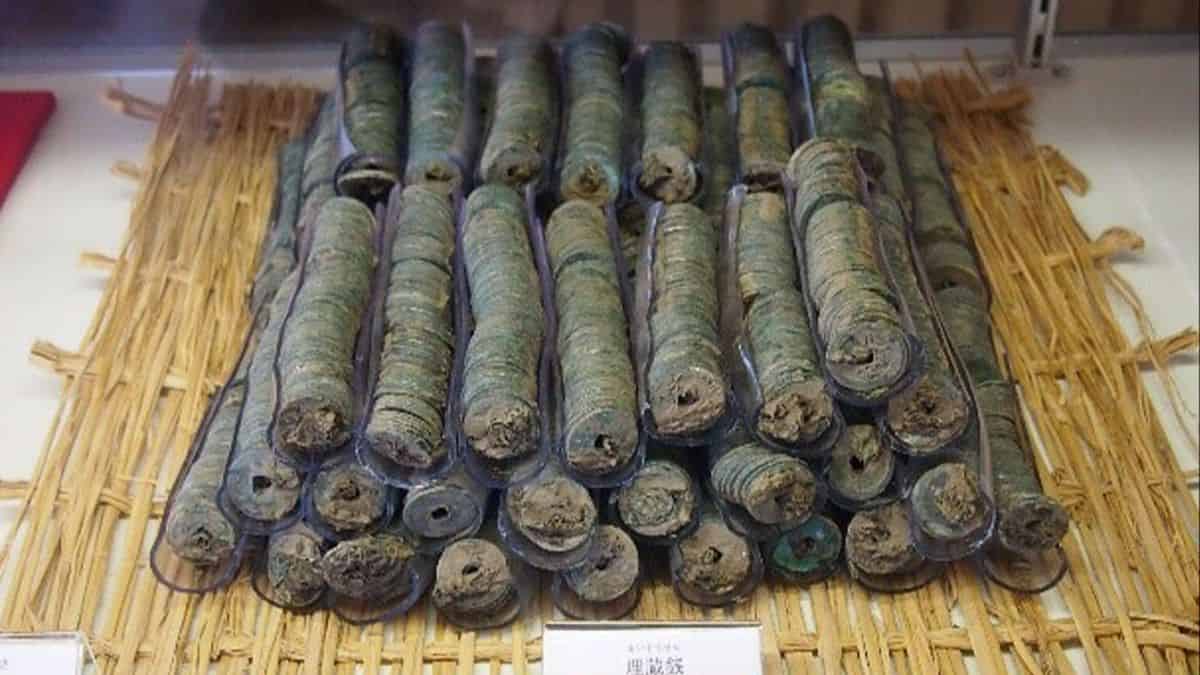Massive 100,000 archaeological coin stash found at a construction site in Japan
A team of archaeologists in Japan have unearthed a massive money pit at a construction site in Maebashi City, located about 60 kilometers northwest of Tokyo. They found a trove of over 100,000 coins several meters below the soil in packs stacked on top of each other — and, so far, these coins are centuries old.

Image credits: Maebashi city government.
The coins were found in an area where a company is planning to build a factory, the national newspaper Asahi Shimbun said. Archaeologists dug up the area and found 1,060 bundles of coins with 100 pieces each. Only 334 coins have been examined so far, the oldest originating from China and dating to 175 BC and the most recent one to 1265 AD.

The oldest coin had the inscription “Ban Liang,” which means half ounce in Chinese. Ban Liang coins date back to 210 BC when Qin Shi Huang, the first emperor of China, introduced them as the first unified currency. They remained in circulation throughout the Western Han dynasty until their replacement by the Wu Zhu cash coins in 118 BC.
Meanwhile, the newest coin is believed to have been buried during the Kamakura Period, which spanned from 1185 AD to 1333 AD. This was a time of big changes in the country’s political system. The period is named for the city where Minamoto Yoritomo set up his military government after a decisive victory over the rival Taira family.
![Archaeologists uncovered over 100,000 ancient coins, some more than 2,000 years old on an archaeological site in Maebashi City, Japan. Including the “Ban Liang,”coin from 175 B.C. China's first unified currency. [6000x6000]. :](https://i.redd.it/jeh37xyfakyb1.jpg)
Ethan Segal, an associate professor of history at Michigan State University who was not involved with the finding, told Live Science that while Japan produced its own metal currency until the 10th century, it likely stopped due to changes in the economy. They then started to use Chinese coins instead, which may explain the coins found.
Segal said the Chinese coins might have belonged to the Northern Song dynasty, which ruled China from 960 to 1127 CE. They manufactured coins, but after they were taken over by a rival nomadic group, the Jurchen, in the 12th century, the coins lost value and people started using them to purchase goods outside of China, Segal told Live Science.
Although large coin troves are uncommon, there has been a significant increase in the discovery of ancient coins during archaeological excavations in Japan in recent years. In 2016, for example, researchers found gold coins in a castle, which was known to have relations with China and other nearby Asian countries in the 14th and 15th centuries.
The recently found collection seems to have been hidden in a hurry, probably for safekeeping in anticipation of a war, according to Asahi Shimbun. However, more research will be needed to understand them better. For now, some of the coins are being exhibited at the lobby of the Maebashi Cultural Protection Division in Japan.
Thanks for your feedback!
Related Post
A shocking documentary proves that mermaids do exist
SHOCKING Revelation: Thuya, Mother of Queen Tiye, Was the Grandmother of Akhenaten and Tutankhamun—What Ancient Egyptian Secrets Did She Leave Behind?
Breaking News: Astonishing Discoveries at Karahan Tepe Confirm an Extraterrestrial Civilization is Hiding on Earth, and NO ONE Knows!
Breaking News: Researchers FINALLY Discover U.S. Navy Flight 19 After 75 Years Lost in the Bermuda Triangle!
NASA’s Secret Investigation: Uncovering the Astonishing Mystery of the UFO Crash on the Mountain!
Explosive UFO Docs LEAKED: Startling Proof That Aliens Ruled Ancient Egypt!